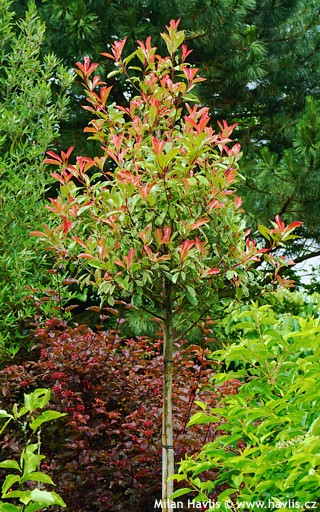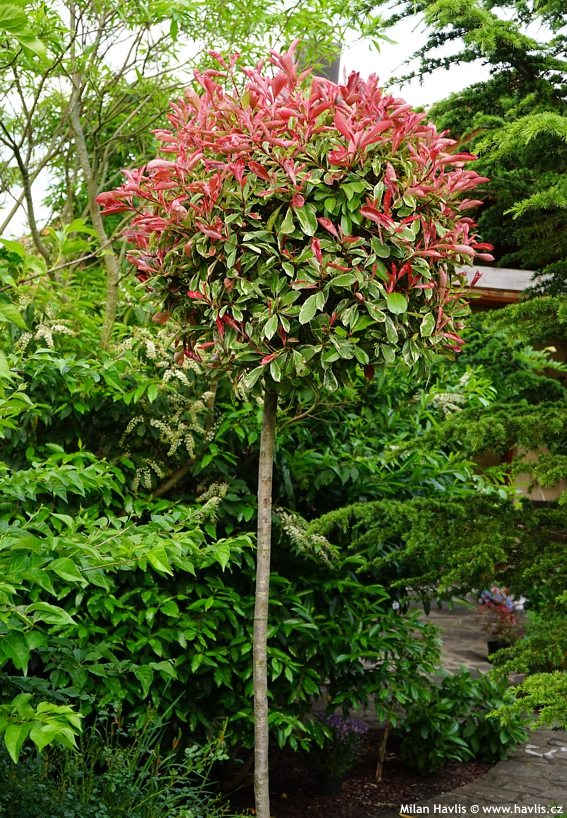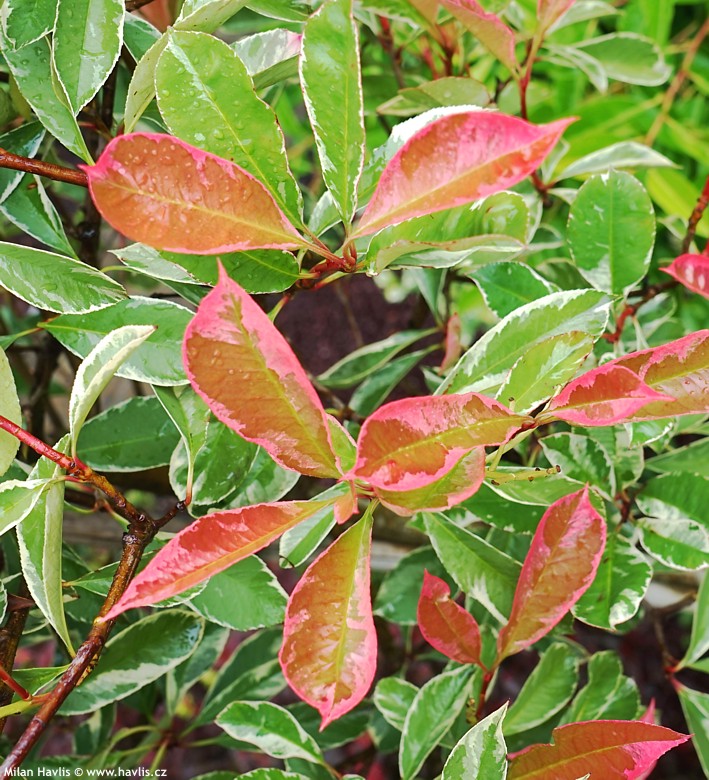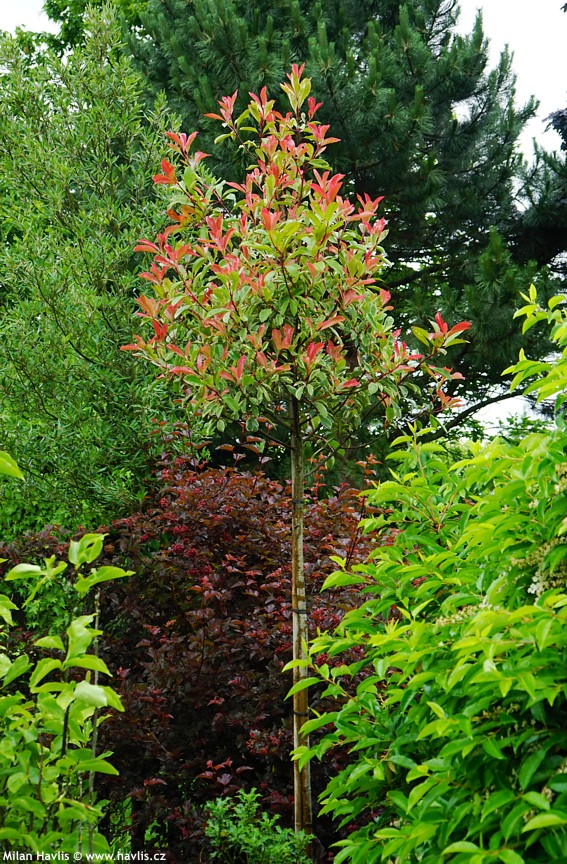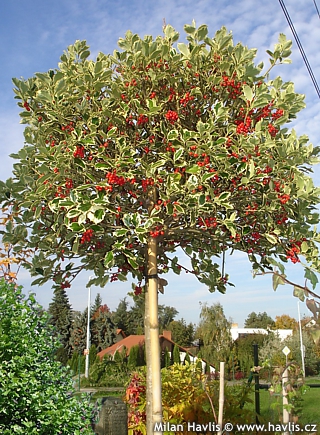Photinia x fraseri 'Cassini' PINK MARBLE® Fraser's photinia - STANDARD TREE


Photinia
When I saw this coloured photinia shrub for the first time it was clear that sooner or later someone will come up with a standard tree form which will not only elevate its height but also its prestige to a higher level. Just imagine an evergreen tree with three-coloured foliage, amazing sight, isn't it? The variety is called PINK MARBLE® and was found in American town West Grove (Pennsylvania) by nurseryman Robert j.Tancredi, jr, in 1991, and patented as PP15,160 in 2002.
Tree form or PINK MARBLE® photinia has evergreen, ovate, and glossy leaves of dark green colour with white margins and silvery-white veins just like marble has, that gain pink shades in autumn and winter. However, the best show happens when new leaves emerge - they are bright pink red and last for 4-6 weeks. First it happens in spring, then again in midsummer, and often in early autumn. Then you can be sure that new leaves will remain red all winter. Young plants grow fast – 30-60 cm per year, and slow down with age. Plants older than 5-6 years make a compact shape that needs little or no pruning to keep its oval shape.
As every standard tree it needs a good support to protect the stem from moving, especially in wind. It can be removed after 3 years if the tree is well established. There is usually a bamboo stick attached to the tree stem when you buy the plant. It needs to be removed before you tie the stem into your new support.
Photinia loves moist but well-drained, humus-rich, acid soil and mulching. Once established it copes well with summer drought, yet for best results provide extra watering in hot and dry summers, and mainly in frost-free, dry periods of winter if the ground is not frozen. If damaged by harsh frost it always regenerates even from older wood. Prune it in early spring after danger of deep frost: March-April. Hardy to min. -23°C.
Last update 25-06-2019

































